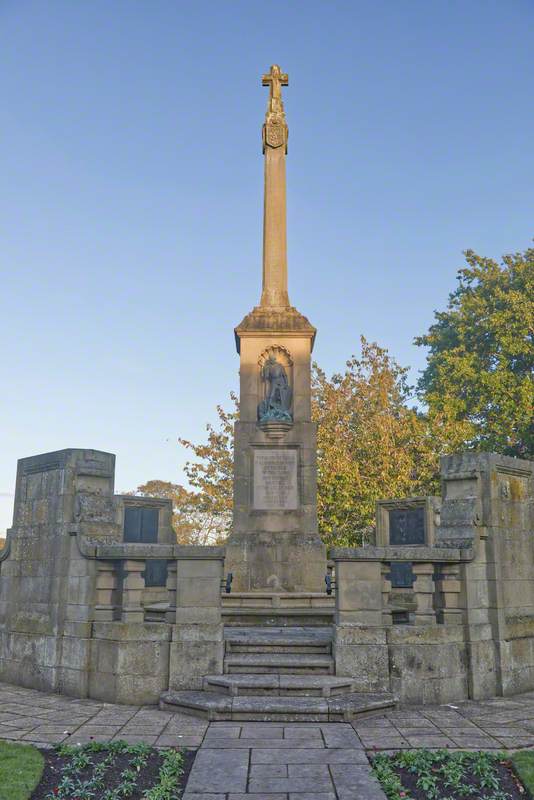
Vulcan Park War Memorial 1918–1928
Robert Stodart Lorimer (1864–1929) and Alexander Carrick (1882–1966) and Gertrude Alice Meredith Williams (1877–1934)
Robert Stodart Lorimer [commonly known as R.S. Lorimer or Robert S. Lorimer] was born at 21 Hill Street, Edinburgh, Scotland on 4 November 1864 and was the brother of the painter John Henry Lorimer (1856-1936). After studying at Edinburgh University from 1882 to 1885, he was articled to Robert Rowand Anderson (1834-1921) of Wardrop & Anderson from 1885 to 1889. He qualified as an architect in 1888 and the following year moved to London where he worked as an assistant to George Frederick Bodley (1827-1907) and Thomas Garner (1839-1906) of Bodley & Garner in 1889-90, to James Marjoribanks MacLaren (1853-1890) in 1890 and to William Dunn (1859-1934) and Robert Watson (1865-1916) of Dunn & Watson in 1891-92. He subsequently returned to Edinburgh and in 1893 set up his own architectural practice at 49 Queen Street.
In 1918, Lorimer was appointed an architect for the War Graves Commission with responsibility for Italy, Germany, Egypt and Macedonia, and in 1921 was chosen principal architect for the War Graves Commission in the UK. He was elected an Associate of the Royal Institute of British Architects (ARIBA) in 1890, and a Fellow of the Royal Institute of British Architects (FRIBA) in 1906. He was also elected an Associate of the Royal Scottish Academy (ARSA) in 1903, an Associate of the Royal Academy (ARA) in 1920, a full member of the Royal Scottish Academy (RSA) in 1921, and a member of the Art Workers Guild in 1922. He was knighted for his services to architecture in 1911. Lorimer died in Edinburgh on 13 September 1929.
Text source: Arts + Architecture Profiles from Art History Research net (AHRnet) https://www.arthistoryresearch.net/






